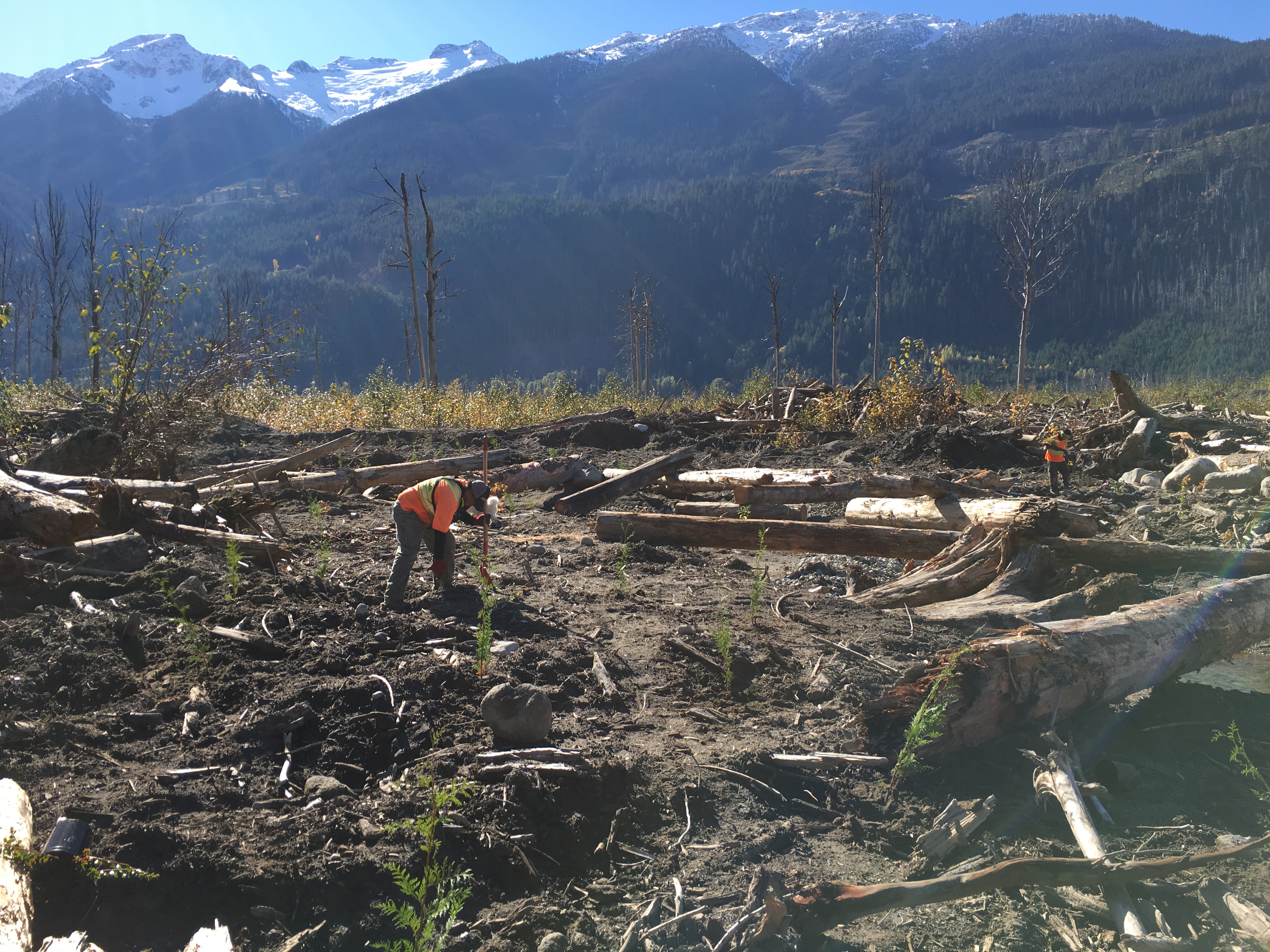We believe that the cornerstone to successful habitat offsetting is the ability to conceptually and practically apply an intimate knowledge and understanding of the ecosystem under study and use creativity and innovation to tailor each plan to meet specific goals. By engaging local stakeholders and First Nations we gain access to traditional knowledge about the species and the factors affecting habitat and are able to put together comprehensive plans that benefit proponents and communities.
What We Offer
Ecofish biologists and engineers are experts at designing, implementing and monitoring successful fish and fish habitat compensation plans for our clients. We are experienced in eco-hydraulic restoration of small urban streams, unique multi-stream nutrient enrichment programs and complex multi component offsetting plans to the benefit of multiple species for high-profile developments in BC. We specialize not only in offsetting of fish habitat but also in wetland creation, riparian and landscape reclamation and terrestrial habitat construction for birds, mammals, reptiles and amphibians. Across dozens of projects spanning the past decade, we have designed 100,000 m² of cost effective, ecologically relevant stream, estuarine, and riparian habitats, that have been shown through long-term monitoring to increase aquatic productivity. We work with local stakeholders, who have intimate and deep understanding of their landscape to create ecologically meaningful projects.
Watershed Scale Restoration Planning
Assessment of:
- Watershed scale impacts
- Natural processes
- Target species
Pre-Project Field and GIS Based Assessments
- Historical aerial photograph and channel migration analysis
- Hydrologic modelling
- Rapid Geomorphic Assessments
- Detailed Geomorphic Assessments
- Fish Habitat Assessment Procedures
- Fish Population Assessments
- Riparian Assessments
Field-based Monitoring Data
- Hydrological
- Hydraulic
- Geomorphic
- Biological
Empirical and Numerical Modelling
We use numerical and empirical modelling techniques to support design. Our staff are proficient with a range of specially coded models to simulate site specific:
- Hydrology (e.g. CP, EFP, MIKE Flood, MIKE 11, HEC-HMS)
- 1, 2, 3-D Eco-hydraulics (e.g. PHABSIM, RIVER2D, Ansys CFX)
- Flood Hydraulics (e.g. HEC-RAS)
- Sediment Supply (Empirical)
- Sediment Transport and Bank Erosion (e.g. HEC-RAS, 1D semi-empirical)
Fish Habitat Restoration Design
We provide fish habitat restoration design in urban and rural settings that take into account the following:
- Physio-climatic setting
- Anthropogenic constraints
Restoration techniques include:
- Riffle-pool
- Step-pool
- Large woody debris complexing
- Vortex rock weir sequences
- Wetland creation
- Stream corridor and floodplain restoration
- Fishways at barriers
- Beaver management
Bio-engineered Stream Stabilization
We design and construct bio-engineered stream stabilization designs to protect property and infrastructure while enhancing aquatic and riparian habitat including:
- Vegetated buttress
- Brush mattress
- Root wad complex
- Deflector vanes
- Crib walls
- Vortex rock weirs
Detailed Design Drawings
We provide detailed design drafting services that ensure the plan is effectively communicated to the client, regulatory agencies, stakeholders, and construction team.
Phasing, and Environmental Management Plans
We determine the most efficient way to construct designs while limiting disturbance to the surrounding ecosystem and provide services related to each phase of the restoration project including permitting, tendering, environmental construction monitoring and reporting.

